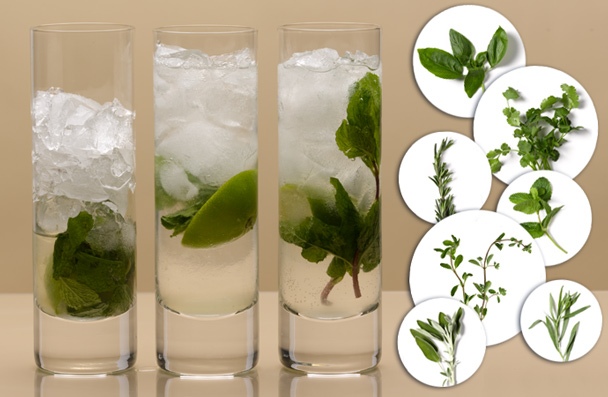The closer I look, the more obvious it becomes: Herbs are a part of almost every cocktail. Whether it's the oregano, chamomile, marjoram, sage, or summer savory you might find among the infusions in sweet or dry vermouth (hello, Manhattan- and Martini-lovers); Green Chartreuse's 130 different plant ingredients, whose names you'll never know unless you're a Very Important Monk (sending kisses to the Bijou sippers out there); the hyssop or angelica often used in absinthe; or that touch of lavender in some gins, the flavor in your favorite tipple probably has its roots in one herb or another. And that's why, if you want to take your cocktail party in a new direction, you need to get your hands in the dirt. There's no easier or more impressive way to punch up a Bloody Mary than to add a sprig or two of a plant you nurtured from infancy. The best food and drink is made with love, and growing your own ingredients—because you have to get dirty to do it, because the outcome is never certain, and because so much depends on timing and chemistry—is truly a labor of love.
I can't prove it, but it seems like every herb is a weed somewhere. In my travels I've seen rosemary the size of hedges in New Zealand, Italy, and the American West. Epazote, a staple in Mexican black beans, grows wild—and wildly—just about anywhere. And if you drop a piece of mint by a creek and come back in a year, both banks are likely to be covered in the fragrant greenery. Disappointment with supermarket mint (which often smells like cat pee to me) is what led to my first excursion into gardening for my home bar. A particularly sweet and pungent sprig in a Gin-Gin Mule at Pegu Club, in New York City, inspired me to ask cofounder Audrey Saunders for a few pieces to root. After a few weeks in a glass of water they'd sprouted a tangle of tendrils, so I stuck the little guys in the dirt alongside a seasonal streambed near my weekend retreat in the mid-Hudson Valley and was rewarded with a summer-long orgy of glorious mint-accented cocktails.
Leafy Inspiration
A few years ago, Adam Seger, the Chicago-based bartender behind the recently released Hum Botanical Liqueur, began growing five kinds of mint in his Mojito garden at Nacional 27. He's now working on a book called The Farm Bar: 40 Cocktails From the Garden to the Glass. I look forward to perusing Seger's tome, but in the meantime I will continue to drool over the book that always sends me running out to the garden and then back to the seed catalog. Scott Beattie's Artisanal Cocktails has recipes that include fennel fronds, hyssop, parsley, shiso, cilantro, amaranth, lemongrass, lots of mint, and various types of basil. Beattie's drinks aren't easy, but works of art rarely are. His culinary approach to drinks includes a slightly radical twist: Rather than muddling the leaves, he prefers to slice them into thin strips. Small-leafed herbs like tarragon and cilantro defy chiffonading, so he does muddle those, but he suggests "a few firm taps" rather than the aggressive mashing one often sees from bartenders.
Tarragon is one of my favorite small-leafed herbs, but I've had no success using it in cocktails. In 2008, while working on a story on the delicious Italian aperitif chinato, I went way, way wrong with the licorice-scented leaves in a sweet Martini variant. (The flavors didn't come together at all, resulting in a bizarre series of tastes plodding across my tongue.) I turned to my dear friend Alberta Straub (a.k.a. Miss Flighty), California-based mixologist extraordinaire and a member of the consulting Chefs' Council at San Francisco's Center for Culinary Development. She suggested we try thyme instead, and bingo! we were back on track. Bryan Dayton, the owner and beverage director of Oak at Fourteenth, in Boulder, Colorado, has created a masterpiece with tarragon, however. He infuses vodka with it and mixes the infusion with cucumber, lime, lavender, and Green Chartreuse for the aptly named Monk's Garden. Infusions are delicate affairs, and there is a tendency to let them go too long. You can infuse spirits with just about anything (herbs, fruit, vegetables, even cured meat), in an endless number of combinations, but make sure you monitor the progress by tasting it daily. It doesn't take much to transform vodka from a relatively flavorless spirit into an unpleasant herbaceous mess.



 Pinterest
Pinterest


